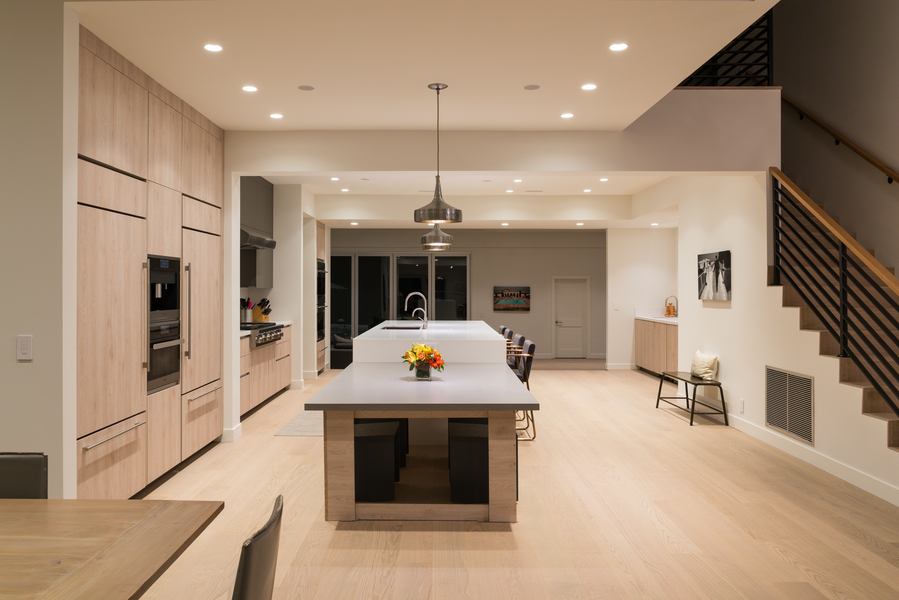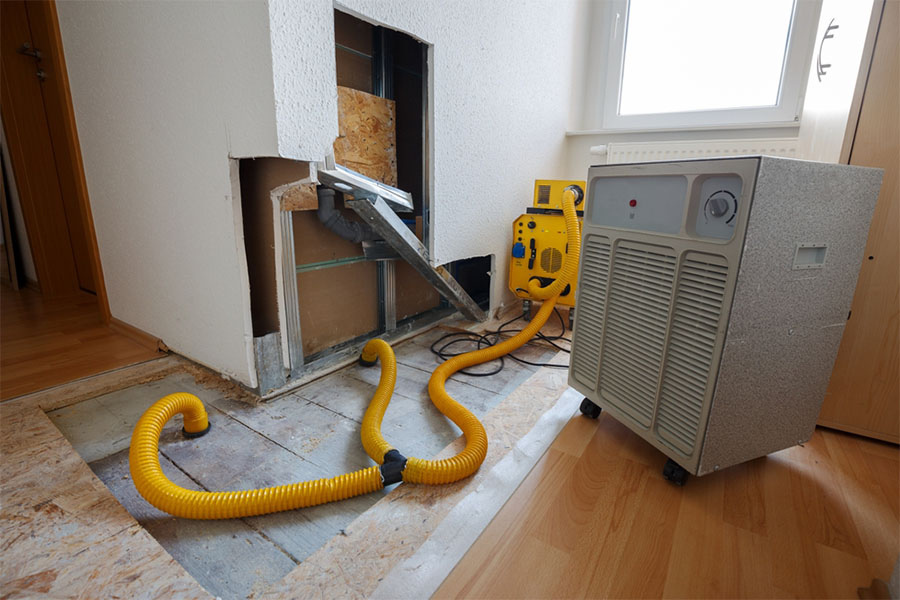
Key Takeaways:
- Choose plants labeled as “full sun” or “sun-loving” that can withstand intense sunlight and have a high tolerance for heat and drought.
- Incorporate a variety of colors and textures in your full sun landscape design to create visual interest.
- Utilize low-maintenance hardscape features such as pathways, patios, and decks to reduce the amount of lawn or flowerbeds that require regular maintenance.
- Create functional outdoor spaces in your full sun landscape by designating areas for dining, entertaining, or lounging.
- Blend practicality with aesthetics by choosing materials and features that are easy to maintain.
- Optimize space with smart design techniques such as vertical gardening and strategic placement of plants and hardscape features.
- Implement efficient watering systems such as drip irrigation to deliver water directly to plant root zones.
- Use proper mulching and weed control methods to reduce weed growth and conserve moisture.
- Perform seasonal maintenance and pruning to promote healthy growth and prevent disease.
- Choose native plants to reduce maintenance, promote biodiversity, and provide food and habitat for local wildlife.
- Incorporate eco-friendly irrigation systems like rainwater harvesting and smart controllers to conserve water.
- Enhance soil health by incorporating organic matter and attract beneficial insects for natural pest control.
1. Maximizing Beauty and Minimizing Effort
Creating a beautiful and low maintenance full sun landscape design requires careful planning and consideration. By choosing the right plants, incorporating color and texture, and utilizing low-maintenance hardscape features, you can achieve a stunning outdoor space that requires less maintenance and more enjoyment.
1.1 Choosing the Right Plants for Full Sun Landscapes
When selecting plants for a full sun landscape, it is important to choose species that can withstand intense sunlight and thrive in these conditions. Look for plants that are labeled as “full sun” or “sun-loving” and have a high tolerance for heat and drought.
Some popular choices for full sun landscapes include succulents, ornamental grasses, and native wildflowers. These plants are not only able to handle the heat but also require less water and maintenance compared to other varieties.
It is also important to consider the mature size of the plants you choose. Make sure to space them adequately to prevent overcrowding and allow for proper air circulation. This will help reduce the risk of disease and promote healthier growth.
1.2 Incorporating Color and Texture for Visual Impact
To create visual interest in your full sun landscape, consider incorporating a variety of colors and textures. Choose plants with different foliage colors, such as shades of green, purple, and silver, to add depth and dimension to your design.
In addition to foliage, flowers can also add a splash of color to your landscape. Consider planting flowering perennials, such as coneflowers, black-eyed Susans, or salvia, that bloom throughout the season and require minimal care.
For added texture, incorporate plants with different leaf shapes and sizes. Mix in ornamental grasses with their wispy blades, or use plants with large, broad leaves to provide contrast against smaller plants.
1.3 Utilizing Low-Maintenance Hardscape Features
Incorporating hardscape features into your full sun landscape design is not only visually appealing but also helps to reduce maintenance. Consider adding features such as pathways, patios, or decks to create functional outdoor spaces and reduce the amount of lawn or flowerbeds that require regular maintenance.
When choosing materials for your hardscape features, opt for low-maintenance options such as stone or pavers that require minimal upkeep. Avoid materials that may crack or fade over time, as they will require more frequent repairs and replacements.
Incorporate elements like mulch or gravel to reduce weed growth and eliminate the need for constant weeding. These materials also help retain moisture in the soil, reducing the frequency of watering.
2. Designing a Low Maintenance Layout
Designing a low maintenance layout for your full sun landscape is essential to ensure easy upkeep and maximum enjoyment. By creating functional outdoor spaces, blending practicality with aesthetics, and optimizing space with smart design techniques, you can achieve a well-designed and low maintenance landscape.
2.1 Creating Functional Outdoor Spaces
When designing your full sun landscape, it is important to create functional outdoor spaces that suit your lifestyle. Consider how you intend to use your outdoor space and plan accordingly.
Designate areas for dining, entertaining, or lounging, and ensure there is ample space for each activity. This will help prevent overcrowding and make your outdoor space more enjoyable and functional.
Integrate features like outdoor kitchens, fire pits, or seating areas into your design to enhance the functionality of your landscape. These features not only add value to your outdoor space but also provide additional areas for leisure and relaxation.
2.2 Blending Practicality with Aesthetics
While aesthetics play a significant role in landscape design, it is important to blend practicality with visual appeal. Consider the maintenance requirements of different design elements and choose materials and features that are not only beautiful but also easy to maintain.
For example, opt for low maintenance groundcovers or artificial turf instead of traditional lawn grass to reduce the need for mowing and watering. Use raised beds or containers for planting to minimize weed growth and facilitate easier maintenance.
Choose materials that are durable and require minimal cleaning and upkeep, such as composite decking or stone pavers for pathways and patios.
2.3 Optimizing Space with Smart Design Techniques
Optimizing space is essential in creating a low maintenance full sun landscape design. By utilizing smart design techniques, you can maximize the functionality of your outdoor space while minimizing maintenance requirements.
Consider vertical gardening techniques such as trellises or green walls to make the most of limited space and create visually stunning focal points. These techniques not only add beauty to your landscape but also help save space and reduce the need for regular maintenance.
Additionally, strategically placing plants and hardscape features can help create defined areas and make your landscape appear larger. Use borders or edging to separate different areas and create a cohesive design.
3. Essential Tips for Easy Landscape Maintenance
Maintaining a low maintenance full sun landscape requires proper care and attention. By implementing efficient watering systems, using proper mulching and weed control methods, and following seasonal maintenance and pruning strategies, you can keep your landscape looking its best with minimal effort.
3.1 Implementing Efficient Watering Systems
Proper watering is essential for the health and maintenance of your full sun landscape. Consider installing a drip irrigation system or using soaker hoses to deliver water directly to the root zone of plants.
Avoid overhead watering, as this can lead to water wastage and increased weed growth. Monitor soil moisture levels regularly and adjust watering schedules as needed to ensure plants receive adequate hydration without overwatering.
3.2 Proper Mulching and Weed Control Methods
Mulching is an effective way to reduce weed growth, conserve moisture, and improve soil health in your full sun landscape. Apply a layer of organic mulch, such as wood chips or shredded bark, around plants and in flowerbeds to suppress weeds and retain moisture.
Regularly inspect your landscape for weeds and promptly remove them before they have a chance to spread. Consider using natural weed control methods, such as hand-pulling or using organic herbicides, to minimize the use of harsh chemicals.
3.3 Seasonal Maintenance and Pruning Strategies
Seasonal maintenance and pruning are important tasks in maintaining a low maintenance full sun landscape. Regularly remove dead or damaged plant material to promote healthy growth and prevent disease.
Prune shrubs and trees as needed to maintain their shape and size, and remove any crossing or rubbing branches. This will improve air circulation and promote better overall plant health.
Consider hiring a professional arborist for larger pruning or tree care tasks to ensure proper technique and minimize the risk of damage.
4. Sustainability and Environmentally Friendly Practices
Creating a sustainable and environmentally friendly full sun landscape not only benefits the planet but also reduces maintenance requirements. By choosing native plants, incorporating eco-friendly irrigation systems, and enhancing soil health, you can create a beautiful landscape that supports biodiversity and requires less maintenance.
4.1 Choosing Native Plants for Low Maintenance and Biodiversity
Native plants are well-adapted to local conditions and require less water, fertilizer, and maintenance compared to non-native species. By incorporating native plants into your full sun landscape, you can reduce the need for supplemental watering and promote biodiversity.
Native plants also provide food and habitat for local wildlife, such as birds and pollinators, contributing to a healthier ecosystem.
4.2 Incorporating Eco-Friendly Irrigation Systems
Opt for eco-friendly irrigation systems, such as rainwater harvesting or greywater reuse, to reduce water consumption in your full sun landscape. Collect rainwater from roofs or install a rain barrel to water plants during dry periods.
Consider using smart irrigation controllers that adjust watering schedules based on weather conditions to prevent overwatering and conserve water. These systems can also be programmed to water different areas of your landscape separately, based on specific plant requirements.
4.3 Enhancing Soil Health and Promoting Natural Pest Control
Healthy soil is the foundation of a thriving landscape. Improve soil health by incorporating organic matter, such as compost or well-rotted manure, into your soil. This will help retain moisture, improve drainage, and provide essential nutrients for plant growth.
Encourage natural pest control in your full sun landscape by attracting beneficial insects, such as ladybugs and bees, with the use of native flowers. These insects help control pest populations and reduce the need for chemical pesticides.
Limit the use of synthetic fertilizers and opt for organic alternatives to minimize environmental impact and promote long-term soil health.
By following these strategies and incorporating low maintenance practices into your full sun landscape design, you can create a stunning outdoor space that requires less effort to maintain, allowing you to spend more time enjoying your beautiful surroundings.
FAQ
FAQ 1: What are some popular choices for full sun landscapes? – Some popular choices for full sun landscapes include succulents, ornamental grasses, and native wildflowers. These plants can withstand intense sunlight and require less water and maintenance compared to other varieties.
FAQ 2: How can I create visual interest in my full sun landscape? – To create visual interest, consider incorporating a variety of colors and textures. Choose plants with different foliage colors and flowers that bloom throughout the season. Also, mix in plants with different leaf shapes and sizes.
FAQ 3: What are some low-maintenance hardscape features for full sun landscapes? – Some low-maintenance hardscape features include pathways, patios, and decks. These features can create functional outdoor spaces and reduce the amount of lawn or flowerbeds that require regular maintenance. Opt for materials like stone or pavers that require minimal upkeep.
FAQ 4: How can I create a low-maintenance layout for my full sun landscape? – To create a low-maintenance layout, consider designing functional outdoor spaces that suit your lifestyle. Blend practicality with aesthetics by choosing materials and features that are easy to maintain. Use smart design techniques like vertical gardening and strategic placement of plants and hardscape features.
FAQ 5: What are some tips for easy landscape maintenance? – Implement efficient watering systems like drip irrigation, use proper mulching and weed control methods to reduce weed growth, and perform seasonal maintenance and pruning. These strategies will help keep your landscape looking its best with minimal effort.
FAQ 6: How can I create a sustainable and environmentally friendly full sun landscape? – Choose native plants that require less water, fertilizer, and maintenance, incorporating eco-friendly irrigation systems like rainwater harvesting or smart controllers, and enhance soil health by incorporating organic matter. These practices will create a beautiful landscape that supports biodiversity and requires less maintenance.
FAQ 7: How can I reduce the need for watering in my full sun landscape? – Consider installing a drip irrigation system or using soaker hoses to deliver water directly to the root zone of plants. Avoid overhead watering, monitor soil moisture levels regularly, and adjust watering schedules as needed. Using mulch can also help retain moisture in the soil.
FAQ 8: How can I improve soil health and promote natural pest control in my full sun landscape? – Improve soil health by incorporating organic matter like compost or well-rotted manure. Encourage natural pest control by attracting beneficial insects with native flowers. Limit the use of synthetic fertilizers and opt for organic alternatives.
Useful Resources:




























